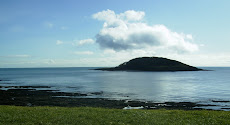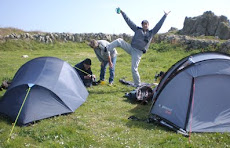Another day in front of the computer, but as yesterday managed to escape pre and post the slog. Got up to Siblyback early and it immediately had a different feel to yesterday. Although cloudy it was much brighter and there was just a hint of a SW breeze. As I got out of the car a Chiffchaff was singing in the Gate Copse - a new bird since yesterday - and I headed off with some optimism. There was definitely a sprinkling of new migrants - a nice White Wagtail being seen off by the resident Pieds in the Wagtail Field (initially picked up on call - some Whites really sound different) and 9 Chiffchaff in all. 2 Wheatear were standing sentinel on the rocks in the pasture at the southern end.
Out on the water were 5 Great Crested Grebes with one pair endulging in a bit of courtship head shaking. Coot numbers down to 23. I'm sure the fishermen (and the season has just started -yesterday there was an array of identikit fisherfolk casting their flies out on the choppy water and with a great deal of success from the selection of Rainbow Trout lying on the banks) were pleased to see 10 Cormorant joining in!
Later I drove down to Hannafore and had a quick foray along the Prom in the drizzle. It was a really high tide and 6 Pied Wagtail and 3 Rock Pipit squabbled over the remaining exposed rocks while 38 Turnstone were crammed on to few square metres of shingle. A brief stare at the horizon resulted in nothing more than a very distant Gannet, and an Eider was feeding just off Looe Island in the company of a Grey Seal.
So that's the weekend.
















